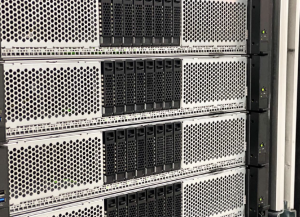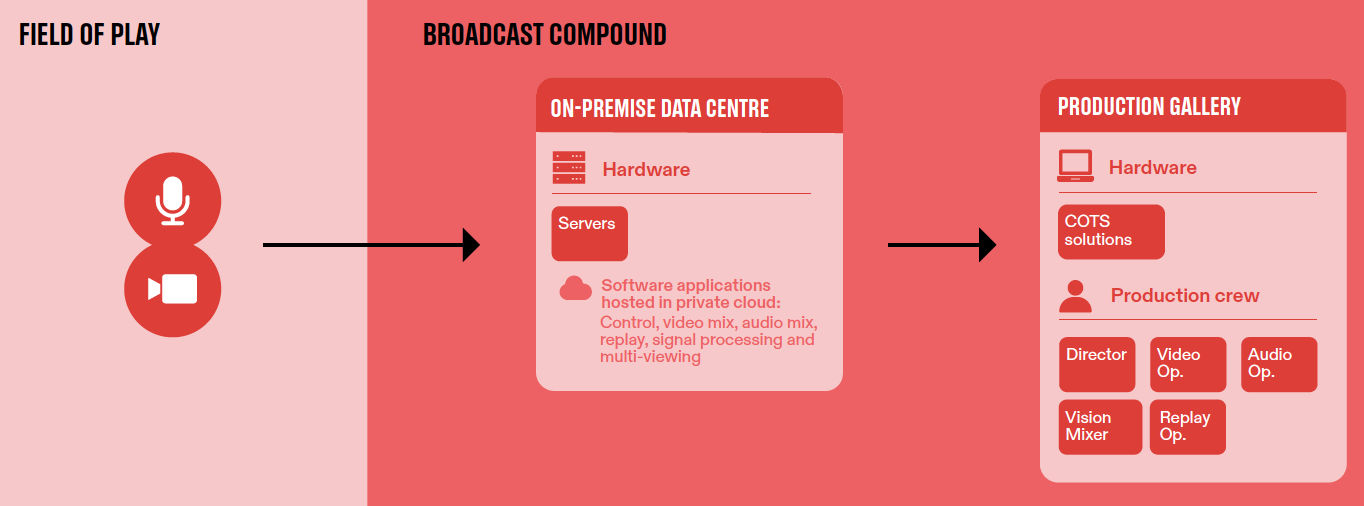Beijing 2022: Virtualized Production of Curling Competition Hints at Future
One of the big technical accomplishments at this year’s Beijing Games has been work between OBS and Worldwide TOP Partner Intel to explore more flexible and modular production environments. John Pearce, OBS, director of venue technical operations, says the goal is reducing logistical and operational complexity compared to traditional broadcast infrastructure, increasing flexibility and reducing the overall broadcast footprint at the venues and the IBC.
OBS, when planning for the Outside Broadcast (OB) vans or fly-away systems that will be used for the coverage of the Olympic Games, always faces the challenge of three key factors: production space at a venue, functionality, and logistics.
“It’s not only the footprint that will be required in the broadcast compound at the venues, but also the actual space inside the production unit to fit both equipment and the dedicated production crew,” says Pearce. “Functionality and ensuring all hardware resources are configured and up-to-date as to deliver the level of production required [is another factor as is] logistics, for example sourcing the production units, bringing them halfway across the world when not sourced locally, shipping specialized equipment, crewing the technical and production crews, setting up at the venue, etc.”
Since January 2021, OBS Advanced Technologies Manager Geert Heirbaut has collaborated with Intel teams to successfully design a forward-looking virtualized OB van that is able to support agile production and provide the utmost in performance and with flexibility.
“In use as a proof of concept during the Olympic Winter Games Beijing 2022, OBS will be testing this new live production environment at the curling venue,” says Pearce. “Based on a cloud-hosted, software-based architecture that mirrors the function of a traditional OB van, the venue production crew will perform their job from a production gallery in the compound.”
The virtualized system uses Commercial Off-The-Shelf (COTS) solutions that Peace says offer a similar user experience as traditional broadcast appliances.
“An on-premise data center will replicate the cloud-based architecture platform,” he adds. “The first stage of this innovative project will give priority to functionality and interoperability, as well as ingesting and processing of the 1080p50 SDR video feeds coming from 18 cameras used for the coverage of one of the sheets at curling, alongside the audio feeds.”

A data center is a key component for virtualized operations.
Further, four additional native IP cameras, dedicated to the virtualized OB van project, will be connected to the network stack, eliminating the need for camera control units.
“Virtualization will redefine broadcast production requirements and workflows and simplify them,” adds Pearce. “This approach allows the broadcast production environment to be scaled to cater for changes in demand and workload, with production workflows that can be spun up and down as required in a matter of seconds. It will also reduce the set up time to the minimum, given that the systems can be configured remotely before moving to the host city.”
In the future, he adds, one could imagine having more flexible production crews, not necessarily based in the venue compounds, but perhaps operating from their own country premises, eliminating the need for dedicated full production crews on-site and avoiding the long term rental of worldwide broadcast equipment for the live production of the Games.
“With mature, cloud-based infrastructure now prevalent across the broadcast industry, helping to process and distribute content faster and more accurately than ever before, virtualization opens new opportunities that could set the groundwork for producing the Olympic Games in an entirely new way in the near future,” he explains. “Virtualization relies on software to simulate hardware functionality and create a virtual computing system in the cloud. The full adoption of an IP-enabled infrastructure, moving the functions of the in-venue production units away from the hardware traditionally on-premise will provide greater flexibility and scalability, while reducing the overall broadcast footprint.”

